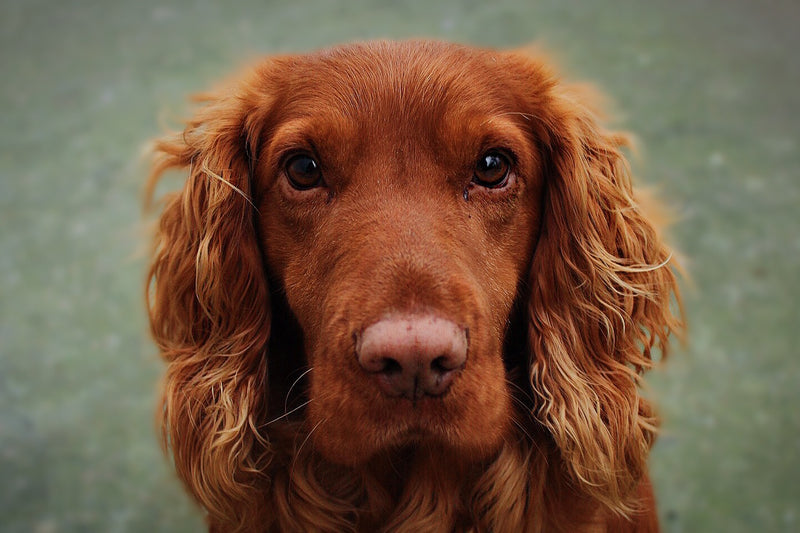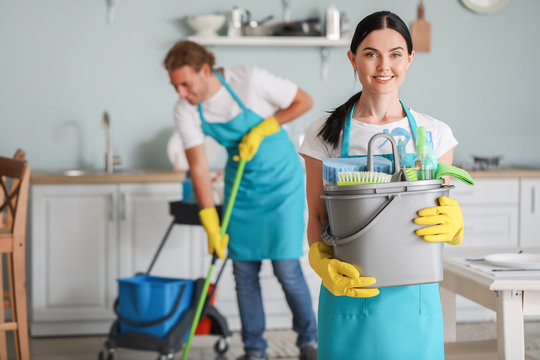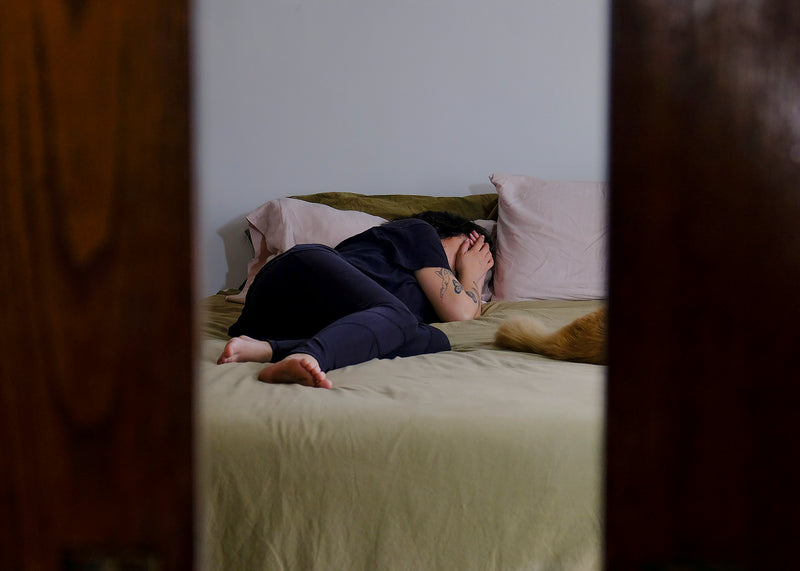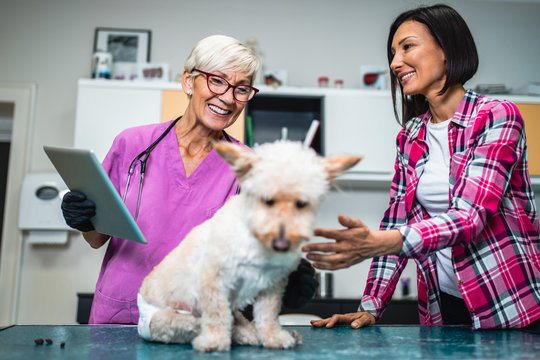Dogs are often referred to as man’s best friend. They are loyal, loving, and always happy to see us. But as much as we love our furry companions, they can still be a handful at times. From barking at the mailman to chewing up your favorite shoes, dogs can sometimes exhibit behaviors that leave us scratching our heads. If you’re looking for ways to improve your dog’s behavior and strengthen your bond with them, then you’ve come to the right place. In this blog post, we’ll share with you 10 simple tips that will transform your canine companion into the best-behaved dog on the block. So get ready to say goodbye to those bad habits and hello to a happier, healthier relationship with your
Understanding Your Dog’s Behavior: A Key to Better Companionship
Understanding Your Dog’s Behavior is crucial to building a strong bond with your furry friend. Dogs are social animals and have their own unique personalities, just like humans. It’s important to recognize their body language and vocal cues to better understand their emotions and needs. For example, a wagging tail doesn’t always mean a happy dog, it could also indicate anxiety or fear. Similarly, growling or barking may be a sign of aggression or discomfort. By observing your dog’s behavior, you can identify potential issues and address them before they become bigger problems. Positive reinforcement is also key in shaping your dog’s behavior. Rewarding good behavior with treats or praise encourages them to repeat those actions in the future. Understanding your dog’s behavior and using positive reinforcement techniques can lead to a happier and healthier relationship between you and your furry companion.
The Power of Positive Reinforcement: Training Techniques for Better Dogs
Positive Reinforcement is one of the most effective training techniques for creating better dogs. Instead of punishing negative behaviors, reward your pup for good behavior with treats, praise, and affection. This will teach your dog to associate positive outcomes with desirable actions. When starting a new command or trick, break it down into small steps and use positive reinforcement along the way. Be consistent in your training approach and remember that patience is key when working with animals. Your furry friend will learn best through repetition and positive experiences, so keep practicing! With time and dedication, you’ll see an improvement in their behavior while also strengthening your bond with them as they become even more eager to please you.
Feeding Your Furry Friend: Tips for a Healthier Diet
Nutrition plays a critical role in maintaining your dog’s overall health and well-being. A balanced and nutritious diet can help prevent diseases, promote healthy growth, and support your canine companion’s immune system.
When selecting dog food, always read the label carefully to ensure it meets the nutritional needs of your dog according to their age, breed, size, and activity level. Avoid foods that contain harmful ingredients like artificial preservatives or flavors. Instead, opt for high-quality protein sources like chicken or fish along with whole grains and vegetables.
It’s also important to feed your furry friend on a regular schedule to maintain their digestive health. Try not to give them table scraps as it can lead to obesity and other health problems.
Remember that proper hydration is equally crucial for dogs as it is for humans. Make sure they have access to clean water at all times.
With these simple tips, you can improve your dog’s diet leading them towards better health resulting in happier lives!
Keeping Your Dog Active: Exercise Ideas for a Happier Pup
Walk It Out: The Importance of Daily Walks for Your Dog’s Health and Happiness
Regular exercise is key to having healthier and happier dogs. Walking your furry friend daily not only benefits their physical health but also their mental well-being. It helps burn off energy, reduce stress, and prevent unwanted behaviors like chewing or digging.
Consistency is the key to seeing positive changes in your dog’s behavior and attitude towards exercise. Make sure you establish a routine that works for both of you and stick with it.
Another important aspect is variety. Mix up the routes, pace, and duration of your walks to keep things interesting for your pup. Adding elements such as sniffing time or playing fetch during the walk can provide additional stimulation.
Remember that every dog has different needs based on factors such as breed, age, size,
Fetch, Anyone? Fun Games to Keep Your Dog Active and Mentally Stimulated
Playing fetch is a classic game that never gets old. It’s a great way to get your dog moving and mentally stimulated. You can also switch it up by hiding treats around the house or yard for your dog to find. Another fun game is tug-of-war, which can help build your dog’s strength and improve their grip. Agility courses are also a great way to challenge your dog’s physical abilities and keep them active. Remember, regular exercise not only helps keep your dog physically fit but also improves their mental health and overall well-being.
Making a Splash: Swimming and Water Activities for Dogs
Swimming and water activities for dogs are a great way to keep your furry friend active and engaged. Not only is it an enjoyable experience, but it’s also beneficial for their physical health. Swimming can help improve muscle strength, flexibility, and cardiovascular endurance. A game of fetch in the water or chasing after toys can also provide mental stimulation and promote bonding between you and your dog.
However, it’s important to take safety precautions when introducing your dog to water activities. Some breeds may not be natural swimmers, so ease them into the activity gradually while providing proper supervision at all times. Also make sure they have access to clean drinking water before and after swimming sessions.
Overall, incorporating swimming or other water-based exercise routines into your dog
Running with Your Pup: Tips for Safe and Effective Jogging with Your Canine Companion
Regular Exercise is important for better dogs, and running is a great way to keep your pup fit. Before starting any exercise routine, it’s crucial to consult with your veterinarian to ensure that your dog is healthy enough for physical activity. Once you get the approval, start slow and gradually increase the intensity of your runs over time. Bring along a leash and plenty of water so both you and your furry companion stay safe and hydrated during the jog. If possible, try to avoid hot concrete surfaces as they can be hard on a dog’s paws. Always pay attention to warning signs such as heavy panting or limping which could indicate fatigue
Grooming and Hygiene: Simple Steps for a Cleaner Canine
Brushing Basics: How to Keep Your Dog’s Coat Shiny and Healthy
Regular grooming and hygiene practices are essential to maintain the health and well-being of your furry friend. Brushing your dog’s coat is one of the most important aspects of grooming that can help prevent tangles and mats, which can cause discomfort or even skin irritation. Brushing also helps distribute the natural oils in your dog’s skin, promoting a shiny and healthy coat. Start by choosing the right brush for your dog’s hair type, then make brushing a routine part of your pet care regimen. By doing so, you can keep your canine companion looking great while reducing shedding and preventing potential health issues caused by poor hygiene practices.
Nail Care 101: Tips for Trimming Your Dog’s Nails Safely and Effectively
Trimming your dog’s nails is an essential part of their grooming routine. Long, overgrown nails can cause discomfort and even pain for your furry companion. To trim your dog’s nails safely and effectively, you’ll need a few things: nail clippers designed specifically for dogs, styptic powder (in case you accidentally cut the quick), and treats to reward good behavior.
Start by getting your dog comfortable with having their paws handled. Then, using the clippers, take small snips off the end of each nail until you see a white circle in the center – this indicates that you’re getting close to the quick. Be sure to avoid cutting into it! If you do accidentally nick it and bleeding occurs, use the styptic powder to
Bath Time Made Easy: Simple Steps for a Stress-Free Doggy Bath
Regular grooming is essential to maintain your canine companion’s health and hygiene. Bathing your dog can be stressful, but it doesn’t have to be. Here are some simple steps for a stress-free bath time:
- Brush your dog before the bath to remove any loose fur or tangles.
- Use lukewarm water and a mild shampoo specifically designed for dogs.
- Avoid getting water in their ears and eyes by placing cotton balls in their ears and using a washcloth on their face.
- Rinse thoroughly to avoid skin irritation from leftover soap residue.
- Towel dry or use a hairdryer set on low heat, depending on your
Dental Health Matters: How to Keep Your Dog’s Teeth Clean and Healthy
Just like humans, dogs need proper dental care to maintain their overall health. Neglecting your dog’s teeth can lead to periodontal disease, which can cause pain and discomfort, difficulty eating, and even infections that spread to other parts of the body. Regular brushing is key in preventing these issues. Use a toothbrush specifically designed for dogs and a toothpaste formulated for pets, as human toothpaste can be harmful to them. In addition to brushing, provide your pup with chew toys or treats that promote healthy chewing habits and reduce tartar buildup. Remember: good dental hygiene leads to better overall health for your furry friend!
Creating a Safe and Comfortable Home Environment for Your Dog
As a responsible dog owner, it’s important to ensure that your furry friend feels safe, comfortable, and at ease in their home environment. One of the first things you should do is dog-proof your living space by removing any potential hazards such as toxic plants or dangling wires.
Next, consider providing them with their own personal space such as a cozy bed or crate where they can retreat when feeling overwhelmed or anxious. Don’t forget to include some of their favorite toys!
You should also ensure that your dog has access to fresh water and food at all times. Consider investing in an automatic feeder if you have a busy schedule.
Finally, think about whether the temperature in your home is suitable for your canine companion. If it gets too hot during summer months, make sure there are ways for them to cool down such as providing plenty of water or keeping fans on low throughout the house.
By taking these simple steps, you can create a safe haven for your beloved pet where both they (and you) can feel happy and relaxed together.
Socializing Your Dog: Building Stronger Bonds with Other Dogs and People
Socialization is important for dogs to develop strong relationships with other dogs and people. Positive reinforcement is key when socializing your dog as it helps build confidence and trust.
Start early by introducing your puppy to different experiences, places, and people. Expose them to new sounds, smells, textures, and environments so they can adapt easily in the future.
Allow supervised playtime with other dogs to help them learn how to interact properly. Be sure that both dogs are well-behaved before allowing them to play together.
When introducing your dog to strangers or visitors, make sure that they greet calmly without jumping or growling. Teaching basic commands such as “sit” or “stay” can also help control their excitement during introductions.
Remember that socialization should be a continuous process throughout their life. Keep exposing them regularly to different situations so they maintain good behavior around people and pets alike.
Dealing with Common Behavioral Issues: Separation Anxiety, Barking, and More
As a dog owner, it’s important to recognize that your furry friend may exhibit certain behavioral issues from time to time. One of the most common issues is separation anxiety, which can cause excessive whining or barking when you leave home. To alleviate this issue, try leaving your dog with a treat-filled toy or providing them with calming music before leaving.
Another common problem is excessive barking. While some breeds are more prone to barking than others, there are ways to reduce this behavior. First and foremost, make sure your dog gets plenty of exercise throughout the day. Additionally, consider purchasing an anti-bark collar or training your dog using positive reinforcement techniques.
Other behavioral problems include destructive chewing and jumping on people. These behaviors can often be addressed through proper training and consistent discipline from their owners.
Remember that each dog is unique and requires individual attention in order to address their specific behavioral issues properly. Don’t hesitate to consult a professional trainer if needed for effective solutions!
Caring for Senior Dogs: Tips for Keeping Your Aging Companion Healthy and Happy
As our furry friends age, they require more attention and care to maintain their health and happiness. Senior dogs may experience joint pain, vision or hearing loss, and other health issues that can affect their quality of life. Here are some tips for caring for your aging companion:
-
Regular vet check-ups: It’s important to take your senior dog to the vet for regular check-ups to catch any health issues early on.
-
Adjust their diet: As dogs age, their nutritional needs change. Consult with your vet about adjusting their diet to meet their changing needs.
-
Provide comfortable bedding: Senior dogs may have trouble getting up and down from hard surfaces, so providing a comfortable bed can help them rest easier.
-
Modify exercise routines: While exercise is still important for senior dogs, it’s important to modify the intensity and duration of their exercise routines to avoid overexertion.
-
Consider supplements: Supplements such as glucosamine and chondroitin can help support joint health in senior dogs.
By providing your senior dog with the proper care and attention they need, you can help them live out their golden years in comfort and happiness.
In conclusion, having a better dog is all about taking proactive steps to understand and care for your furry friend. By implementing the tips we’ve shared in this article – from positive reinforcement training techniques to providing a healthy diet and exercise routine – you can transform your canine companion into the happiest, healthiest version of themselves.
At our shop, we offer a range of products that can help support your efforts towards creating a better life for your pup. From high-quality dog food to grooming tools and toys, we have everything you need to maintain their physical health and mental wellbeing. Visit us today to see how we can help elevate your dog’s quality of life!






